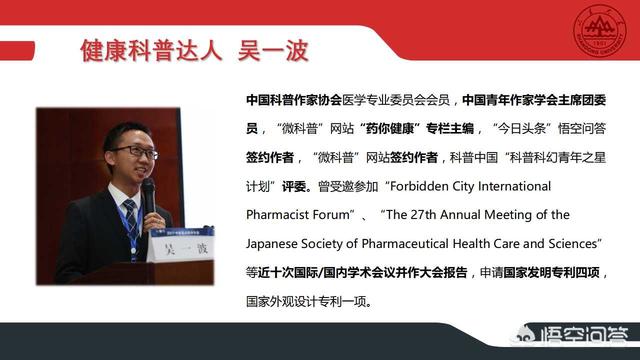What are the nucleoside analogs and what are the non-nucleoside analogs in HIV antiretroviral therapy?
Thank you for inviting Wu Yibo, a member of the Chinese Popular Science Writers Association, to answer your questions:Briefly: the nucleoside reverse transcriptase inhibitors commonly used in clinical practice are zidovudine, stavudine, desipramine, lamivudine, tenofovir, abacavir, and aristocarbine; the non-nucleoside reverse transcriptase inhibitors are nevirapine, delavirdine, etravirine, efavirenz, and rilpivirine.
AIDS.known as Acquired Immune Deficiency Syndrome, is a highly lethal infectious disease.Its etiology is due to the infection of Human Immunodeficiency Virus , HIV, a reverse transcription virus, which mainly attacks the patient's T-cells, decreasing their number and destroying the cellular immune function, leading to a decrease in the patient's body immunity and making them susceptible to a variety of opportunistic infections, which in turn increases the patient's chances of developing tumors.
If you like it, please click on the right to follow, more health knowledge to share with you!
current clinical situationThere are more than 30 major antiretroviral drugs used to treat AIDSAccording to itsMechanisms of action can be categorized into six main groups: Protease inhibitors, fusion inhibitors, integrase chain transfer inhibitors, CCR5 receptor inhibitors, nucleoside reverse transcriptase inhibitors, and non-nucleoside reverse transcriptase inhibitors.Currently, we mainly use nucleoside reverse transcriptase inhibitors, non-nucleoside reverse transcriptase inhibitors and protease inhibitors to treat AIDS.
What are nucleoside reverse transcriptase inhibitors?
Nucleoside reverse transcriptase inhibitors are the most diverse class of antiviral drugs for the treatment of HIV. Their mechanism of action is: nucleoside reverse transcriptase inhibitors are similar in structure to deoxyribonucleotides, and can competitively bind to HIV reverse transcriptase to inhibit DNA synthesis by HIV, thus inhibiting HIV proliferation.Nucleoside reverse transcriptase inhibitors commonly used in clinical practice include zidovudine, stavudine, desipramine, lamivudine, tenofovir, abacavir, and aristocarbine.One of the newest nucleoside reverse transcriptase inhibitors, aripitabine, inhibits the proliferation of HIV resistant to lamivudine and zidovudine. However, the use of nucleoside reverse transcriptase inhibitors in the treatment of AIDS enhances the ability of HIV to become resistant to dehydroinosine and tenofovir.
What are non-nucleoside reverse transcriptase inhibitors?
Non-nucleoside reverse transcriptase inhibitors inhibit HIV proliferation primarily by inhibiting reverse transcriptase activity. Non-nucleoside reverse transcriptase inhibitors currently approved for use by the U.S. Food and Drug Administration (FDA)There is nevirapine, delavirdine, etravirine, efavirenz and rilpivirine.Delavirdine, efavirenz, and nevirapine have been available for a long time, and some HIVs have developed stable resistance to them.
AIDS is a treatable but incurable disease., and its antiviral therapeutic drugs also need further research and improvement.
Question Answer: Shandong University School of Pharmacy Jiang ZeyuAudit: Wu Yibo
HIV, or Acquired Immune Deficiency Syndrome (AIDS), is a devastating infectious disease that causes immune deficiency.HIV is treated with antiretroviral therapy, which consists of both nucleoside and non-nucleoside medications.
Nucleoside reverse transcriptase inhibitors inhibit the replication of the HIV virus by entering the infected cells and causing the virus to lose its template for replication, including zidovudine, lamivudine, didanosine, stavudine, abacavir, and so on. These drugs can be secreted through breast milk and should be used with caution in pregnant and breastfeeding women and those with hepatic, renal or cardiac insufficiency. There may be adverse effects on infants and young children. Among them, zidovudine has a myelosuppressive effect, and megaloblastic anemia, granulocytopenia and thrombocytopenia will occur. Stavudine and abacavir in combination with ribavirin can cause lactic acidosis.
Non-nucleoside reverse transcriptase inhibitors differ from nucleoside drugs in that non-nucleoside drugs do not inhibit cellular DNA polymerase, are less toxic but are prone to drug resistance, and are generally used together with nucleoside drugs to enhance their effects, and are usually not applied alone. The drugs in this class are: nevirapine, efavirenz, etravirine, rilpivirine. Nevirapine main adverse reactions for the rash, generally mild can be self-healing; if any patient has a severe rash or rash with systemic symptoms should be discontinued, prohibited to re-administer the drug; such as the occurrence of a rash accompanied by systemic symptoms of hypersensitivity reactions such as fever, arthralgia, myalgia, or visceral lesions, such as hepatitis, granulocyte deficiencies, renal dysfunction should be permanently discontinued not to be re-administered.
The authoritative interpretation of Pharmaceutical Affairs, unauthorized reproduction, plagiarism will be punished.
This question and answer are from the site users, does not represent the position of the site, such as infringement, please contact the administrator to delete.

